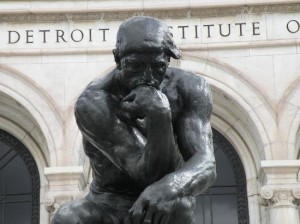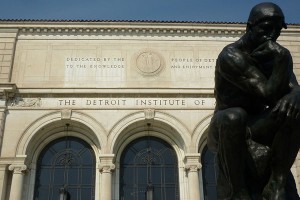 The Board of Trustees of the Detroit Institute of Art has, afterall, committed to raising $100 million as part of the deal engineered by Judge Gerald Rosen to save the museum’s collection from sale. The museum just issued this statement, in part:
The Board of Trustees of the Detroit Institute of Art has, afterall, committed to raising $100 million as part of the deal engineered by Judge Gerald Rosen to save the museum’s collection from sale. The museum just issued this statement, in part:
…Today, the DIA’s Board of Directors approved a commitment by the DIA to raise $100 million from corporate and individual donors toward these efforts. The DIA joins the foundation community ($370 million) and the State of Michigan ($350 million) in support of Chief Judge Rosen’s plan to benefit the people of Detroit and the State.
“The DIA’s management and volunteer leadership forthrightly agreed to accept this challenge, despite its difficulty and the many other fundraising commitments the museum manages annually,†said Eugene A. Gargaro, Jr. [at right], chairman of the DIA Board of Directors. “We are hopeful this agreement will allow Detroit’s bankruptcy to move forward smoothly as we all work toward a brighter and better future for Detroit.â€
None of the funds raised by the DIA will directly benefit the DIA. The funds will be directed to a third party, which will disburse the funds for pension payments. As part of the agreement, the City of Detroit will transfer to the DIA free and clear legal title to the museum building, the art collection and all related assets. The DIA will continue to operate the museum with funds raised from its current donor base and from the tri-county millage.




